The Kingdom Plantae, commonly known as the Plant Kingdom, encompasses a vast array of organisms ranging from the simplest algae to the most complex flowering plants. As autotrophic, multicellular eukaryotes, plants play an indispensable role in sustaining life on Earth by converting sunlight into chemical energy through the process of photosynthesis. In this article, we delve into the intricate world of plants, exploring their characteristics, classifications, and evolutionary significance.
Table of Contents
Historical Background
The five-kingdom classification system, which includes the Kingdom Plantae, was proposed by the American scientist Robert H. Whittaker in 1969. Whittaker’s system aimed to classify all living organisms into five distinct kingdoms based on fundamental characteristics and evolutionary relationships. These kingdoms are Monera, Protista, Fungi, Plantae, and Animalia. The classification of plants under the Kingdom Plantae was originally established by Carl Linnaeus, a Swedish naturalist also known as Carolus Linnaeus. Linnaeus, often regarded as the father of modern taxonomy, laid the foundation for contemporary systematics and the classification of living organisms.
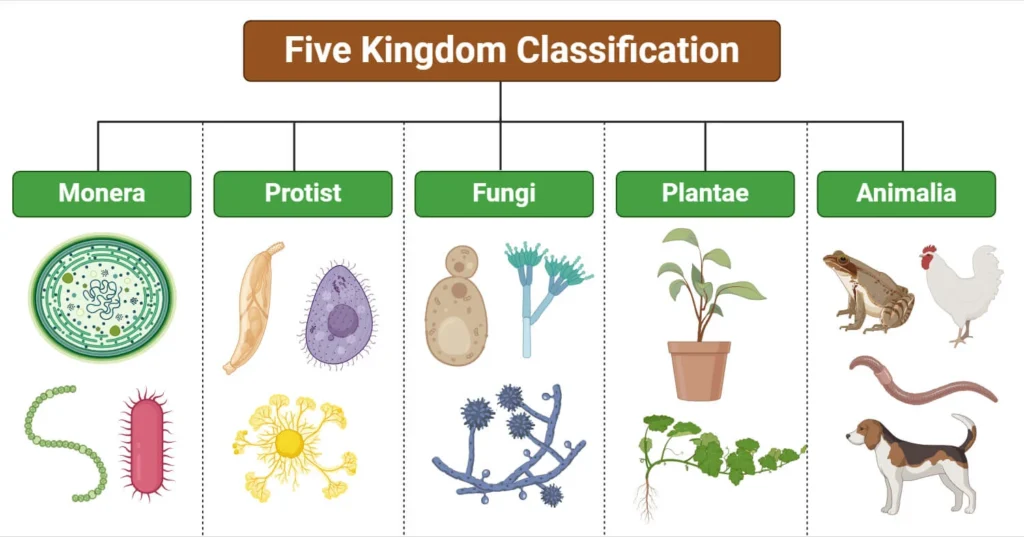
Characteristics of Kingdom Plantae
The Kingdom Plantae is defined by several unique characteristics that distinguish plants from other life forms. These characteristics are essential for their survival and proliferation in diverse environments across the globe.
1. Eukaryotic Cells
All plants are composed of eukaryotic cells, which means their cells contain a true nucleus enclosed in a membrane, as well as other membrane-bound organelles such as mitochondria and chloroplasts. This complex cellular organization allows for advanced functions, such as energy production and photosynthesis, which are crucial for the plant’s survival and growth.
2. Cell Wall
A defining feature of plant cells is the presence of a rigid cell wall made primarily of cellulose. This cell wall provides structural support, protects against physical damage, and maintains the shape of the plant cells. Additionally, it acts as a barrier against pathogens and helps regulate the intake and loss of water and nutrients.
3. Photosynthesis
Plants are primarily autotrophic organisms that produce their own food through photosynthesis. This process involves the absorption of sunlight by chlorophyll, a green pigment located in the chloroplasts, and the conversion of light energy into chemical energy in the form of glucose. The overall chemical reaction for photosynthesis can be summarized as:
6CO2 + 6H2O + light energy → C6H12O6 + 6O2
This process not only sustains the plant itself but also produces oxygen, which is vital for the survival of aerobic organisms, including humans.
4. Multicellularity
Most plants are multicellular, meaning they consist of multiple cells that are specialized for various functions. These cells form tissues, such as xylem and phloem, which are involved in the transportation of water, nutrients, and sugars throughout the plant. The development of multicellularity allows plants to grow larger and adapt to various ecological niches.
5. Alternation of Generations
A unique feature of plants is their life cycle, which exhibits alternation of generations. This involves a cyclic transition between two distinct phases: the haploid gametophyte phase and the diploid sporophyte phase. In the gametophyte phase, the plant produces gametes (sperm and egg cells) through mitosis, while in the sporophyte phase, it produces spores through meiosis. This alternation enhances genetic diversity and allows plants to adapt to changing environmental conditions.
6. Vascular Tissues
Vascular plants possess specialized tissues called xylem and phloem that facilitate the transport of water, minerals, and nutrients throughout the plant body. Xylem primarily transports water and dissolved minerals from the roots to other parts of the plant, while phloem distributes sugars and other metabolic products derived from photosynthesis. This vascular system enables plants to grow taller and colonize various terrestrial environments.
7. Reproduction
Plants can reproduce both sexually and asexually. Sexual reproduction involves the fusion of male and female gametes to form seeds, which can grow into new plants. This method enhances genetic variation, which is crucial for adaptation and evolution. Asexual reproduction, on the other hand, occurs through methods such as vegetative propagation, where new plants grow from fragments of the parent plant, such as stems, roots, or leaves. This method allows for rapid colonization of an area by genetically identical plants.
8. Seeds and Embryos
In seed plants, the embryo, which is the young sporophyte, is enclosed within a seed that contains stored nutrients and is protected by a seed coat. Seeds facilitate the dispersal of plant offspring across different environments and allow them to remain dormant under unfavorable conditions, thereby ensuring the continuation of the species.
9. Adaptations
Plants have evolved numerous adaptations to thrive in various environments. For instance, the waxy cuticle on leaves reduces water loss in arid conditions, while specialized root systems anchor the plant and absorb water and nutrients from the soil. Additionally, plants have developed various reproductive strategies, such as attracting specific pollinators or producing lightweight seeds for wind dispersal, to enhance their chances of survival and reproduction.
Classification of Kingdom Plantae
The Kingdom Plantae is broadly classified into several subgroups based on characteristics such as their reproductive structures, life cycles, and evolutionary relationships. Here is a detailed overview of the major divisions within the plant kingdom:
1. Bryophytes (Non-Vascular Plants)
Bryophytes are a group of non-vascular plants that lack specialized tissues for conducting water and nutrients. They are among the most primitive plants and are typically found in moist environments where they absorb water directly through their surfaces.
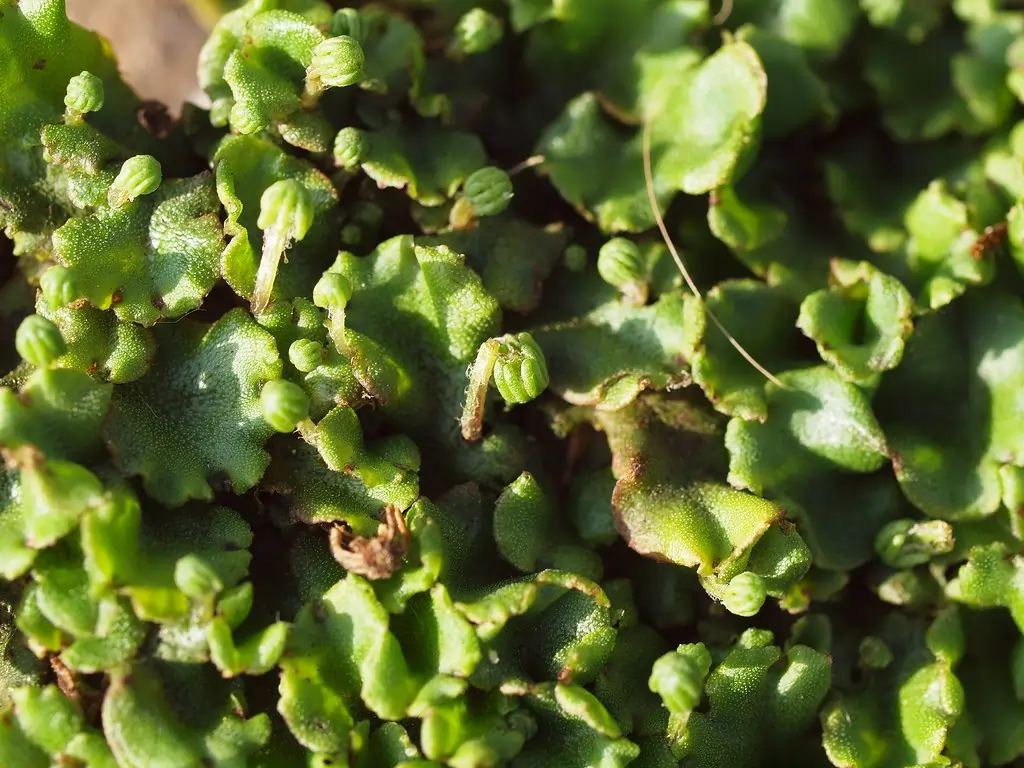
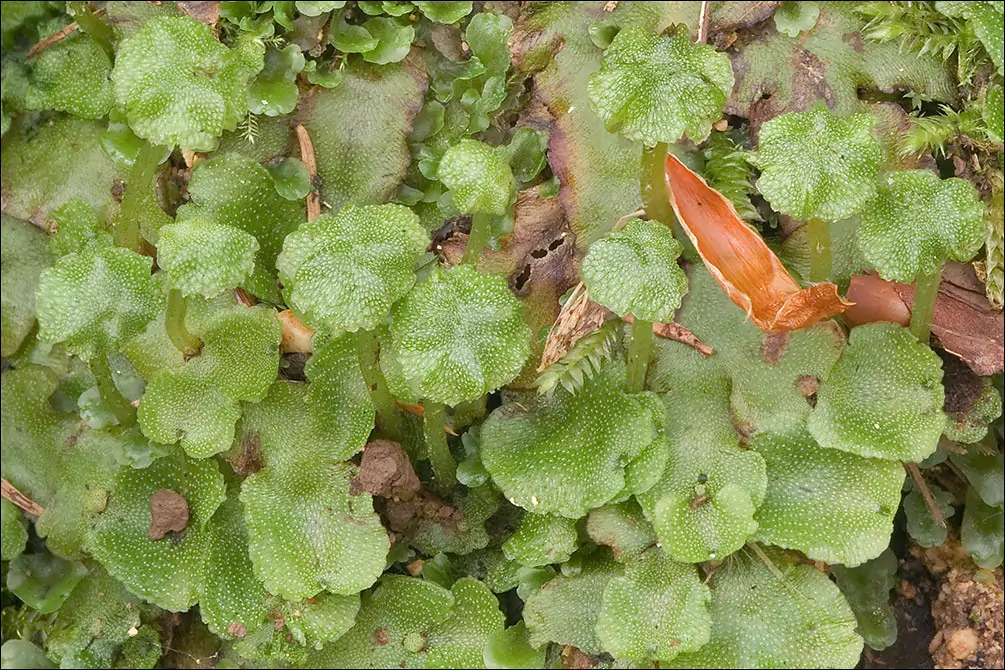
- Mosses (Bryopsida): Mosses are small, soft plants that often form dense green clumps or mats in damp or shady locations. They lack true roots, stems, or leaves and instead have simple structures called rhizoids that anchor them to the substrate. Mosses reproduce via spores produced in sporangia, which are often elevated on stalks called setae.
- Liverworts (Marchantiophyta): Liverworts are small, non-vascular plants that often resemble mosses but have a flattened, leaf-like structure called a thallus. They are typically found in moist, shaded environments and reproduce both sexually, with the production of spores, and asexually, through the fragmentation of their thallus.
- Hornworts (Anthocerotophyta): Hornworts are named for their elongated, horn-like sporophytes that grow from a flattened, green gametophyte. They are found in damp habitats and reproduce by producing spores within their horn-like structures.
2. Pteridophytes (Vascular Plants Without Seeds)
Pteridophytes are vascular plants that possess specialized tissues for conducting water and nutrients but do not produce seeds. They reproduce via spores and are typically found in moist, shaded environments.
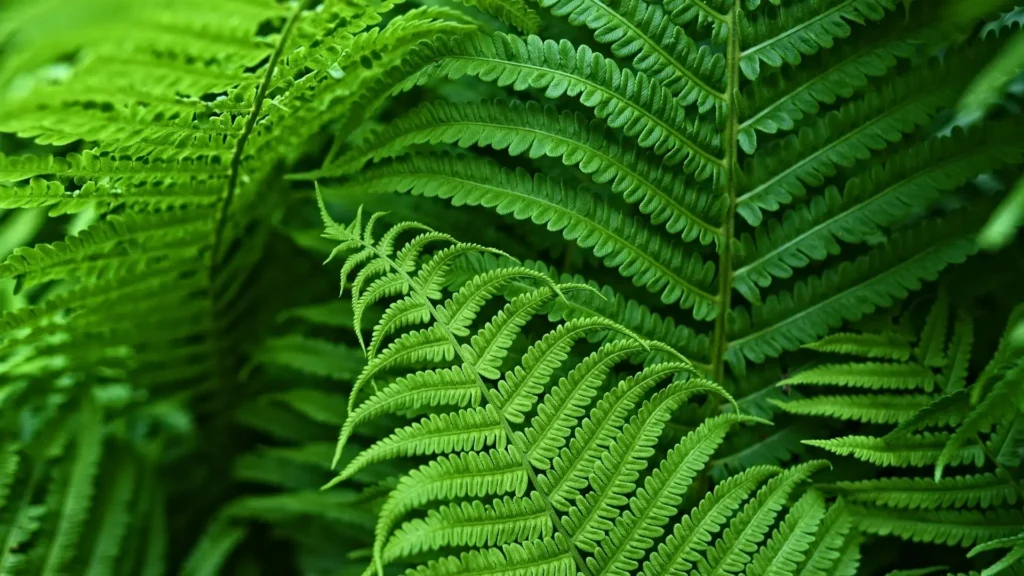
- Ferns (Polypodiopsida): Ferns are vascular plants with large, divided leaves known as fronds. They reproduce by producing spores on the undersides of their fronds in structures called sori. Ferns can vary greatly in size, from small ground covers to large tree ferns found in tropical regions.
- Horsetails (Equisetopsida): Horsetails are characterized by their jointed stems and small, scale-like leaves. They are typically found in wet, sandy soils and reproduce by producing spores in cone-like structures called strobili.
- Club Mosses (Lycopodiopsida): Despite their name, club mosses are not true mosses. They are small, vascular plants with simple leaves called microphylls and reproduce via spores produced in cone-like structures called strobili.
3. Gymnosperms (Plants with Naked Seeds)
Gymnosperms are seed-producing plants that do not produce flowers or fruits. Instead, their seeds are exposed on the surface of cone scales or other structures.
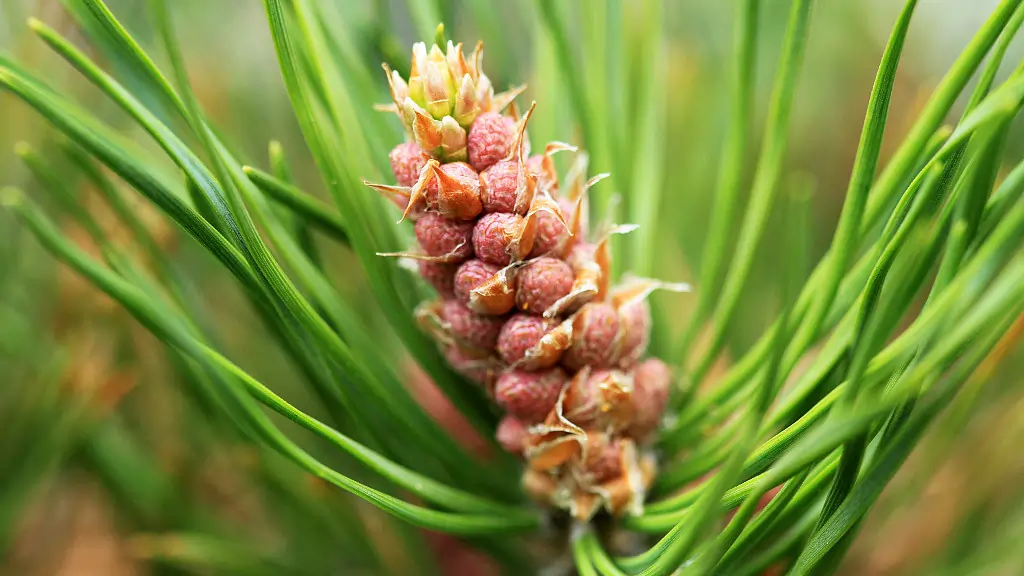
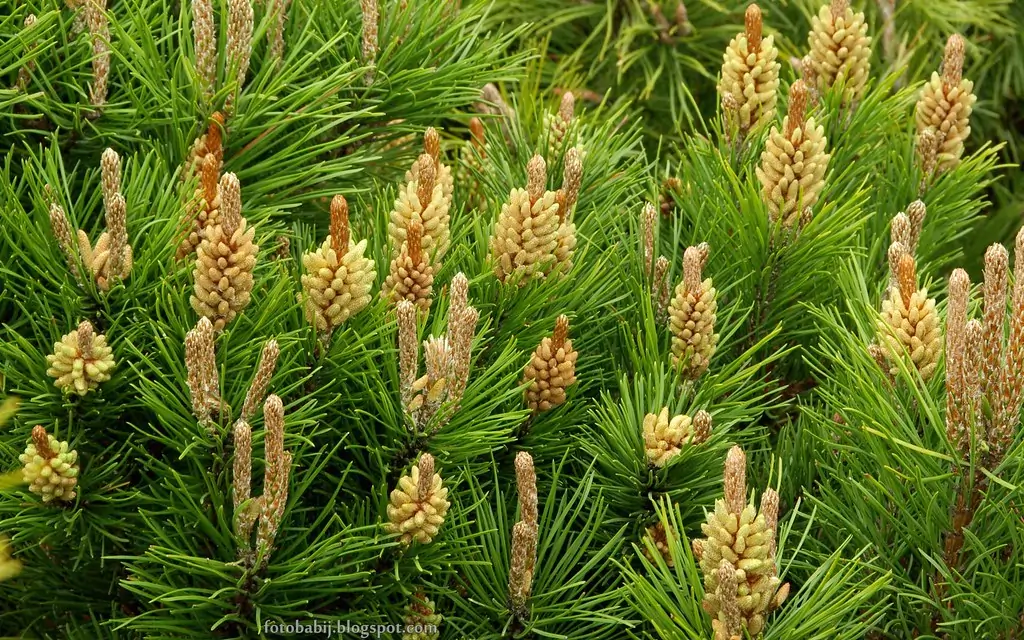
- Conifers (Coniferophyta): Conifers are the largest group of gymnosperms and include trees and shrubs such as pine, spruce, and fir. They are characterized by their needle-like or scale-like leaves and produce seeds in cones. Conifers are typically found in cooler climates and are known for their wood, which is used in construction and paper production.
- Cycads (Cycadophyta): Cycads are ancient plants with large, compound leaves that resemble those of palms. They are typically found in tropical and subtropical regions and reproduce via large, cone-like structures that produce seeds.
- Ginkgo (Ginkgophyta): The Ginkgo tree, specifically Ginkgo biloba, is the only surviving member of this division. It is easily recognizable by its unique fan-shaped leaves and is often referred to as a living fossil because it has remained largely unchanged for millions of years.
- Gnetophytes (Gnetophyta): Gnetophytes are a diverse group of gymnosperms that include plants like Welwitschia, Ephedra, and Gnetum. They are characterized by having some features similar to angiosperms, such as vessel elements in their wood.
4. Angiosperms (Flowering Plants)
Angiosperms, or flowering plants, are the largest and most diverse group in the plant kingdom. They are characterized by their ability to produce flowers and seeds enclosed within fruits.
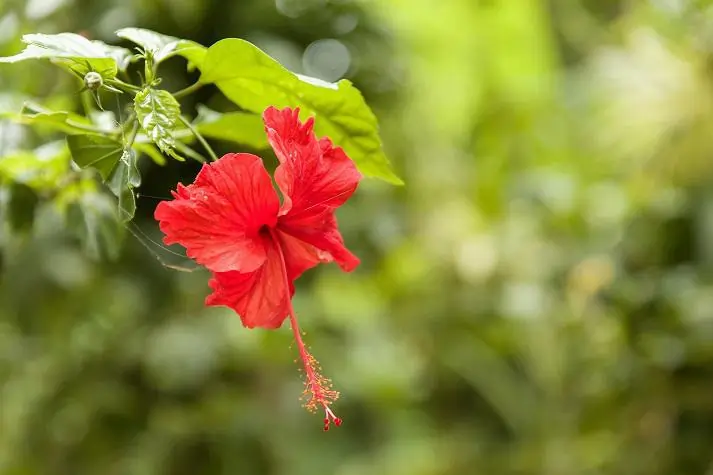
- Monocots (Monocotyledonae): Monocots are a group of angiosperms that have only one seed leaf, or cotyledon, in their embryos. They typically have parallel leaf veins, flower parts in multiples of three, and fibrous root systems. Examples of monocots include grasses, lilies, and orchids.
- Dicots (Dicotyledonae): Dicots have two cotyledons in their embryos and usually exhibit net-like leaf venation, flower parts in multiples of four or five, and a taproot system. Examples of dicots include roses, sunflowers, and beans.
5. Thallophyta
Thallophyta is a group that historically included a wide range of simple, plant-like organisms such as algae and fungi. While many of these organisms are no longer classified within the plant kingdom, they played an important role in the early understanding of plant evolution.
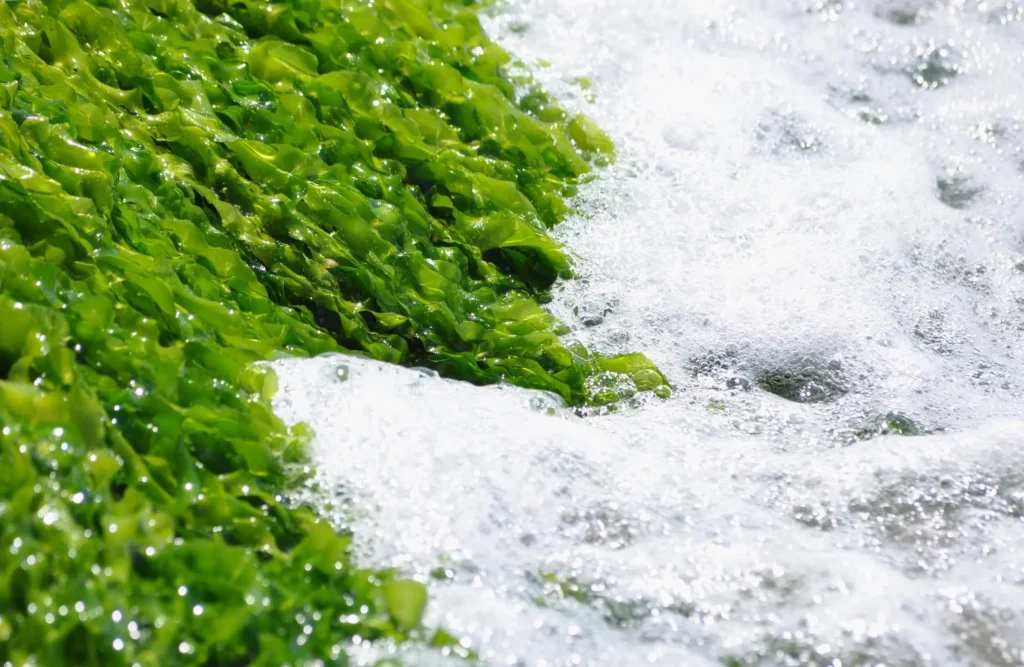
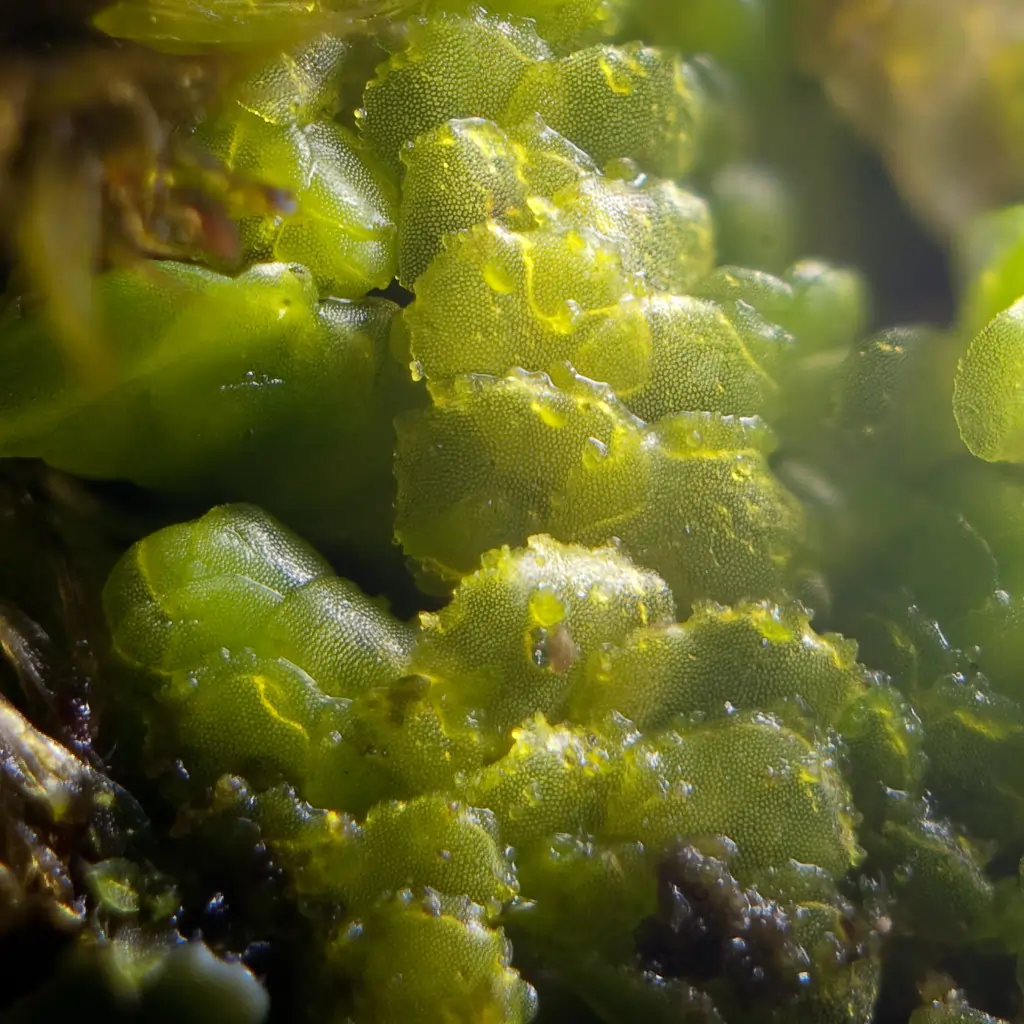
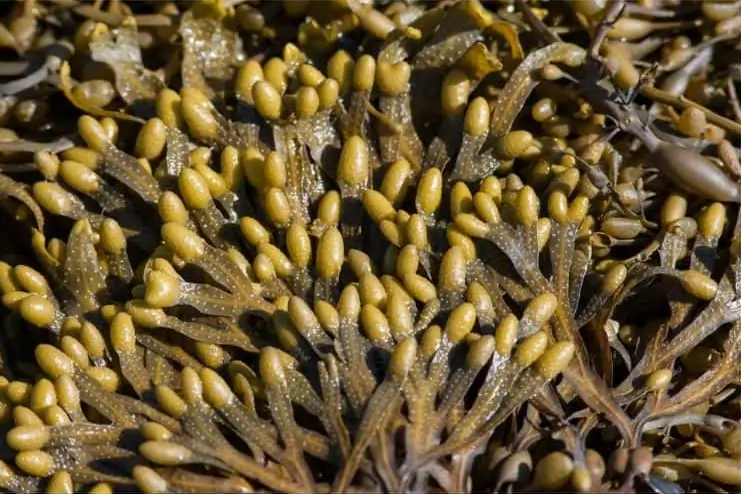
- Green Algae (Chlorophyta): Green algae are simple, multicellular, or unicellular organisms found primarily in aquatic environments. They are believed to be the closest relatives of land plants and share many characteristics, such as chlorophyll and cell wall composition.
- Brown Algae (Phaeophyta): Brown algae are large seaweeds that are commonly found in marine environments. They have a unique brown pigment, fucoxanthin, which gives them their characteristic color and enables them to thrive in deeper waters where light is limited.
- Red Algae (Rhodophyta): Red algae are primarily marine organisms that contain pigments such as phycoerythrin, which allows them to photosynthesize in deeper waters. They are important for the formation of coral reefs and are used in various industries for products like agar and carrageenan.
- Diatoms (Bacillariophyta): Diatoms are single-celled algae with intricate silica shells. They are a major component of phytoplankton and play a crucial role in aquatic ecosystems as primary producers.
- Dinoflagellates (Dinophyta): Dinoflagellates are single-celled organisms that can be found in both marine and freshwater environments. Some species are known for causing harmful algal blooms, commonly referred to as red tides, which can have significant ecological and economic impacts.
Informative Table Based on Kingdom Plantae
To better understand the diversity and characteristics of the Kingdom Plantae, we can summarize the main divisions, their unique traits, and representative examples in a comprehensive table. This table provides a quick overview of the various groups of plants, ranging from the simplest non-vascular types to the most complex flowering species, highlighting their distinguishing features and ecological significance.
| Division | Characteristics | Reproduction | Examples |
|---|---|---|---|
| Bryophytes | Non-vascular, lack specialized tissues for water and nutrient transport, require moist environments | Reproduce via spores, alternation of generations | Mosses (Bryopsida), Liverworts (Marchantiophyta), Hornworts (Anthocerotophyta) |
| Pteridophytes | Vascular possesses xylem and phloem, no seeds, reproduces via spores | Reproduce via spores, complex reproductive structures | Ferns (Polypodiopsida), Horsetails (Equisetopsida), Club Mosses (Lycopodiopsida) |
| Gymnosperms | Vascular produces “naked” seeds not enclosed in fruits, often evergreen | Reproduce via seeds, cones, wind pollination | Conifers (Coniferophyta), Cycads (Cycadophyta), Ginkgo (Ginkgophyta), Gnetophytes (Gnetophyta) |
| Angiosperms | Vascular, produce seeds enclosed within fruits, highly diverse, have flowers | Reproduce via seeds, flowers, animal pollination | Monocots (Monocotyledonae – grasses, lilies), Dicots (Dicotyledonae – roses, sunflowers) |
| Thallophyta | Simple, plant-like organisms, mainly aquatic, lack complex structures, some are unicellular | Reproduce via spores, some with unique reproductive cycles | Green Algae (Chlorophyta), Brown Algae (Phaeophyta), Red Algae (Rhodophyta), Diatoms (Bacillariophyta), Dinoflagellates (Dinophyta) |
This table encapsulates the broad categories within the Kingdom Plantae, illustrating the evolutionary progression from simple non-vascular plants to complex flowering plants. Each group has adapted to its specific environment and developed unique reproductive strategies, showcasing the incredible diversity and adaptability of plants.
Related Articles
- The Deuteromycetes: A Comprehensive Study Of Imperfect Fungi
- Basidiomycetes: A Comprehensive Study Of Club Fungi
- Ascomycetes – A Detailed Exploration Of Characteristics, Reproduction, And Importance
- Phycomycetes: A Detailed Exploration Of The Lower Fungi
- Kingdom Fungi: A Comprehensive Exploration
- Protozoans: Structure, Classification, Characteristics, And Examples
- Slime Moulds: A Comprehensive Overview
- Euglenoid: The Unique Plant-Animal Hybrid
- Dinoflagellates: The Whirling Protists of the Oceans
- Chrysophytes: A Detailed Exploration Of Their Classification, Characteristics, & Significance
- Eubacteria: Structure, Characteristics, Classification, And Types
- Archaebacteria: A Glimpse Into Ancient Life Forms
- Kingdom Protista: A Diverse Group Of Single-Celled Eukaryotes
- The Diversity And Importance Of Bacteria: Archaebacteria And Eubacteria
- Kingdom Monera: The World Of Bacteria
- The Evolution Of Biological Classification Systems
- Understanding Taxonomy, Taxonomic Categories And Hierarchy
- The Diversity Of Life: Understanding Taxonomy, Classification, And Systematics
Conclusion
The Kingdom Plantae is a diverse and complex group of organisms that have adapted to virtually every environment on Earth. From the simplest algae to the most intricate flowering plants, each group within this kingdom plays a vital role in the ecosystem, contributing to the balance of nature and the sustenance of life. Understanding the characteristics and classifications of plants not only provides insight into their biology and evolution but also highlights the importance of conserving these essential organisms for future generations.
Frequently Asked Questions (FAQs) about the Kingdom Plantae
What is the Kingdom Plantae?
Kingdom Plantae, also known as the plant kingdom, comprises all multicellular, eukaryotic organisms that primarily obtain their energy through photosynthesis. These organisms range from simple algae to complex flowering plants. Plants are characterized by their ability to produce food using sunlight, possess a rigid cell wall made of cellulose, and have specialized vascular tissues in many species.
What are the main characteristics of plants in the Kingdom Plantae?
The main characteristics of plants in the Kingdom Plantae include:
- Eukaryotic Cells: Plants have cells with a true nucleus and membrane-bound organelles.
- Cell Wall: Plant cells have a rigid cell wall composed of cellulose.
- Photosynthesis: Plants use chlorophyll to capture sunlight and convert it into chemical energy.
- Multicellularity: Most plants are multicellular, consisting of various cell types that form tissues and organs.
- Alternation of Generations: Plants exhibit a life cycle alternating between a haploid gametophyte phase and a diploid sporophyte phase.
- Vascular Tissues: Xylem and phloem are specialized tissues for transporting water, nutrients, and sugars.
- Reproduction: Plants can reproduce both sexually and asexually.
What is the role of photosynthesis in plants?
Photosynthesis is the process by which plants, algae, and some bacteria convert carbon dioxide and water into glucose and oxygen using sunlight. It is crucial for plants as it provides the chemical energy required for growth and development. Photosynthesis also releases oxygen into the atmosphere, which is essential for the survival of aerobic organisms, including humans.
What is the difference between vascular and non-vascular plants?
Vascular plants have specialized tissues, namely xylem and phloem, which are used to transport water, nutrients, and sugars throughout the plant. This adaptation allows them to grow larger and inhabit a wide range of environments. Examples include ferns, gymnosperms, and angiosperms.
Non-vascular plants, on the other hand, do not have these specialized tissues and rely on simple diffusion to move water and nutrients. As a result, they are usually smaller and found in moist environments. Examples include mosses, liverworts, and hornworts.
What is the significance of the alternation of generations in plants?
The alternation of generations is a life cycle that includes both a multicellular haploid phase (the gametophyte) and a multicellular diploid phase (the sporophyte). This cycle is significant because it allows for genetic variation and adaptation to changing environments. The gametophyte produces gametes (sperm and egg cells) through mitosis, while the sporophyte produces spores through meiosis. This alternation between phases ensures the survival and evolution of plant species.
How are plants classified within the Kingdom Plantae?
Plants in the Kingdom Plantae are classified into several major divisions based on their characteristics, such as the presence or absence of vascular tissues, reproductive strategies, and life cycles. The main divisions are:
- Bryophytes: Non-vascular plants (e.g., mosses, liverworts, hornworts)
- Pteridophytes: Vascular plants without seeds (e.g., ferns, horsetails, club mosses)
- Gymnosperms: Vascular plants with “naked” seeds (e.g., conifers, cycads, ginkgo)
- Angiosperms: Vascular plants with seeds enclosed in fruits (e.g., flowering plants like monocots and dicots)
- Thallophyta: Simple, plant-like organisms (e.g., algae)
What are bryophytes, and what makes them unique?
Bryophytes are a group of non-vascular plants that include mosses, liverworts, and hornworts. They are unique because they do not have specialized tissues for water and nutrient transport, relying instead on simple diffusion. This limits their size and typically confines them to moist environments where they can absorb water directly through their surfaces. Bryophytes reproduce via spores and do not produce seeds or flowers.
What are pteridophytes, and how do they differ from bryophytes?
Pteridophytes are vascular plants that do not produce seeds. Unlike bryophytes, they have vascular tissues (xylem and phloem) that allow them to transport water and nutrients more efficiently, enabling them to grow larger and inhabit a wider range of environments. Examples of pteridophytes include ferns, horsetails, and club mosses. Pteridophytes reproduce via spores, which are often produced in specialized structures like sori on the undersides of fern fronds.
What are gymnosperms, and why are they considered ancient plants?
Gymnosperms are seed-producing vascular plants that do not produce flowers or fruits. Their seeds are exposed on the surface of cone scales or other structures, hence the term “naked seeds.” Gymnosperms are considered ancient because they were among the first plants to produce seeds, allowing them to colonize various terrestrial environments more effectively. Major groups of gymnosperms include conifers, cycads, ginkgo, and gnetophytes.
What are angiosperms, and why are they the most diverse group of plants?
Angiosperms, also known as flowering plants, are the most diverse group in the plant kingdom. They are characterized by their ability to produce flowers and fruits that enclose seeds, which protects the seeds and aids in their dispersal. Angiosperms have developed various reproductive strategies, such as attracting pollinators like bees, birds, and bats, which increases the efficiency of reproduction. The two main subgroups of angiosperms are monocots and dicots.
What are monocots and dicots?
Monocots and dicots are the two main subdivisions of angiosperms.
- Monocots have one seed leaf (cotyledon), parallel leaf veins, flower parts in multiples of three, and a fibrous root system. Examples include grasses, lilies, and orchids.
- Dicots have two seed leaves (cotyledons), net-like leaf venation, flower parts in multiples of four or five, and a taproot system. Examples include roses, sunflowers, and beans.
What is the role of xylem and phloem in plants?
Xylem and phloem are the two main types of vascular tissues in plants.
- Xylem is responsible for transporting water and dissolved minerals from the roots to the rest of the plant. It also provides structural support due to its lignified cell walls.
- Phloem transports sugars and other metabolic products from the photosynthetic tissues (like leaves) to other parts of the plant, including roots and growing shoots. This process is known as translocation.
How do plants reproduce asexually?
Plants can reproduce asexually through several methods, allowing them to produce offspring that are genetically identical to the parent plant. Common asexual reproduction methods include:
- Vegetative Propagation: New plants grow from parts of the parent plant, such as stems (e.g., stolons in strawberries), roots (e.g., tubers in potatoes), or leaves (e.g., plantlets in kalanchoe).
- Fragmentation: In some plants, a part of the plant body breaks off and develops into a new individual (common in algae and some bryophytes).
- Budding: A small growth, or bud, forms on the parent plant and eventually detaches to become a new plant.
What are seeds, and why are they important for plants?
Seeds are reproductive structures that contain an embryo, stored nutrients, and a protective coat. They are important for plants because they allow for the dispersal of offspring over wide areas and enable the embryo to survive in harsh conditions until it finds a suitable environment for germination. Seeds also provide a food source for the developing plant during its early growth stages.
How do gymnosperms differ from angiosperms in seed production?
Gymnosperms produce “naked” seeds that are not enclosed within a fruit, usually developing on the surface of cones or other structures. In contrast, angiosperms produce seeds
enclosed within a fruit, which develops from the ovary of a flower. This difference affects the mechanisms of seed dispersal and the protection offered to the developing seeds.
What are the ecological roles of plants in the environment?
Plants play several critical ecological roles, including:
- Producers: As primary producers, plants convert sunlight into chemical energy through photosynthesis, forming the base of the food chain.
- Oxygen Production: Plants release oxygen as a byproduct of photosynthesis, which is essential for the survival of most life forms on Earth.
- Carbon Sequestration: Plants absorb carbon dioxide from the atmosphere, helping to mitigate the effects of climate change.
- Habitat: Plants provide habitat and food for a wide range of organisms, from microorganisms to large mammals.
- Soil Stability: The root systems of plants help prevent soil erosion and maintain soil structure.
What are the main types of algae in the Kingdom Plantae, and why are they important?
Algae are simple, plant-like organisms that are primarily aquatic. The main types of algae in the Kingdom Plantae are:
- Green Algae (Chlorophyta): Found in freshwater and marine environments, they are believed to be the closest relatives of land plants.
- Brown Algae (Phaeophyta): Mostly marine, they include large seaweeds like kelp and are important for coastal ecosystems.
- Red Algae (Rhodophyta): Found in deeper marine waters, they contribute to the formation of coral reefs and are used in the production of agar and carrageenan.
Algae are important because they produce a significant portion of the world’s oxygen through photosynthesis and form the base of the aquatic food web.
How do plants adapt to different environments?
Plants have evolved a variety of adaptations to survive in different environments, such as:
- Waxy Cuticles: A protective layer that reduces water loss in dry environments.
- Specialized Root Systems: Adaptations like taproots for deep water access or fibrous roots for surface water absorption.
- Thorns and Spines: Modified leaves or stems that protect against herbivores.
- CAM Photosynthesis: A specialized form of photosynthesis used by plants in arid environments to minimize water loss.
These adaptations help plants optimize their growth and reproduction in specific habitats.
What is vegetative propagation, and why is it important in horticulture?
Vegetative propagation is a form of asexual reproduction where new plants grow from parts of the parent plant, such as stems, roots, or leaves. This method is important in horticulture because it allows for the rapid production of large numbers of plants that are genetically identical to the parent, ensuring uniformity in crop quality. It is commonly used for propagating fruit trees, ornamental plants, and other commercially valuable species.
What is the significance of the Kingdom Plantae in human life and civilization?
The Kingdom Plantae is of immense significance to human life and civilization for several reasons:
- Food: Plants are the primary source of food for humans and many other organisms.
- Medicine: Many plants have medicinal properties and are used in traditional and modern medicine.
- Clothing and Shelter: Plants provide materials for clothing (like cotton) and shelter (like wood).
- Oxygen: Plants produce oxygen, which is essential for human survival.
- Economic Value: Agriculture, forestry, and horticulture are major economic activities that depend on plants.
The Kingdom Plantae is integral to the Earth’s ecosystems and human survival, providing resources, ecological stability, and cultural value.

